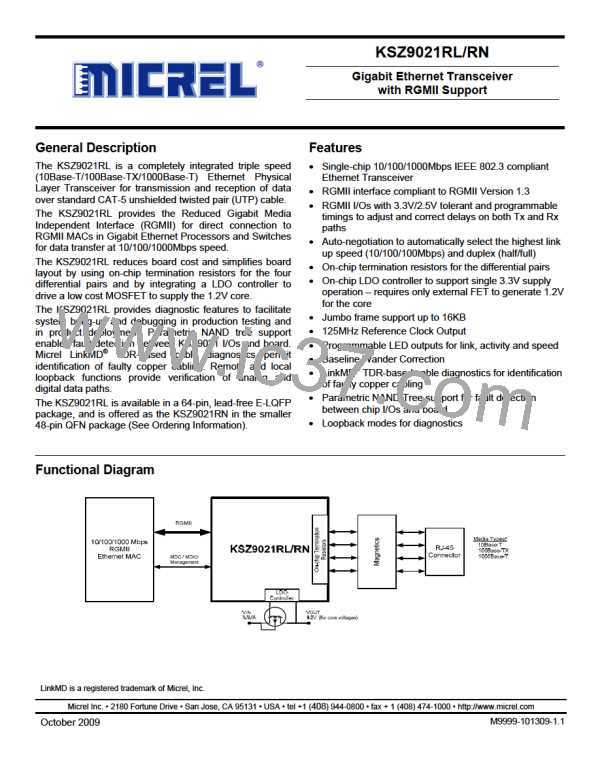Micrel, Inc.
KSZ9021RL/RN
Start Auto Negotiation
Parallel
Operation
No
Force Link Setting
Yes
Attempt Auto
Negotiation
Listen for 100BaseTX
Idles
Listen for 10BaseT Link
Pulses
Bypass Auto Negotiation
and Set Link Mode
No
Join Flow
Link Mode Set ?
Yes
Link Mode Set
Figure 3. Auto-Negotiation Flow Chart
For 1000Base-T mode, auto-negotiation is required and always used to establish link. During 1000Base-T auto-
negotiation, Master and Slave configuration is first resolved between link partners, and then link is established with the
highest common capabilities between link partners.
Auto-negotiation is enabled by default at power-up or after hardware reset. Afterwards, auto-negotiation can be enabled
or disabled through register 0 bit 12. If auto-negotiation is disabled, then the speed is set by register 0 bits 6 and 13, and
the duplex is set by register 0 bit 8.
If the speed is changed on the fly, then the link goes down and either auto-negotiation or parallel detection will initiate until
a common speed between KSZ9021RL/RN and its link partner is re-established for link.
If link is already established, and there is no change of speed on the fly, then the changes will not take effect unless either
auto-negotiation is restarted through register 0 bit 9, or a link down to link up transition occurs (i.e., disconnecting and
reconnecting the cable).
After auto-negotiation is completed, the link status is updated in register 1 and the link partner capabilities are updated in
registers 5, 6, and 10.
The auto-negotiation finite state machines employ interval timers to manage the auto-negotiation process. The duration of
these timers under normal operating conditions are summarized in the following table.
M9999-101309-1.1
October 2009
27

 MICREL [ MICREL SEMICONDUCTOR ]
MICREL [ MICREL SEMICONDUCTOR ]